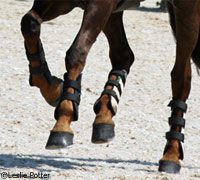 Sand is the most common arena footing used throughout the United States and is a good shock absorber. The best sand for a riding arena is usually hard, cleaned and screened, and of medium coarseness. Cleaned means silt and clay have been washed out of the sand; screened means that large grains have been removed, so the sand is more uniform. Hard sand won’t break down as quickly. Because sand drains so well, it requires frequent watering. Some people choose to help sand along by adding wood or other materials that hold water (See “Hot Tip” pg. 88). Sand that has been correctly watered (not so much water that it becomes slick) will provide better traction than dry sand.
Sand is the most common arena footing used throughout the United States and is a good shock absorber. The best sand for a riding arena is usually hard, cleaned and screened, and of medium coarseness. Cleaned means silt and clay have been washed out of the sand; screened means that large grains have been removed, so the sand is more uniform. Hard sand won’t break down as quickly. Because sand drains so well, it requires frequent watering. Some people choose to help sand along by adding wood or other materials that hold water (See “Hot Tip” pg. 88). Sand that has been correctly watered (not so much water that it becomes slick) will provide better traction than dry sand.
Over time, sand, like other footing, will break down. “Your footing will become tired,” George says. “It will break down into finer granules, and then it will not be as forgiving. At that point, maybe two to three years down the road, you want to take all that sand off, down to your base, which should still be at the same pitch and level as where you were.” George says to regrade the base a little bit and level it off, then place your new footing on top.
Further Reading
At-home Arena Maintenance

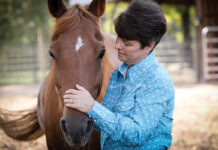
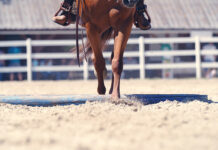
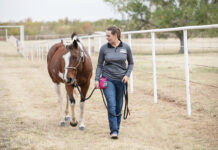
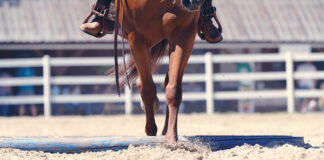

Just as you must consider the disciplines in choosing the materials, you also must consider the disciplines that will use your arena when deciding on the proper sand depth.